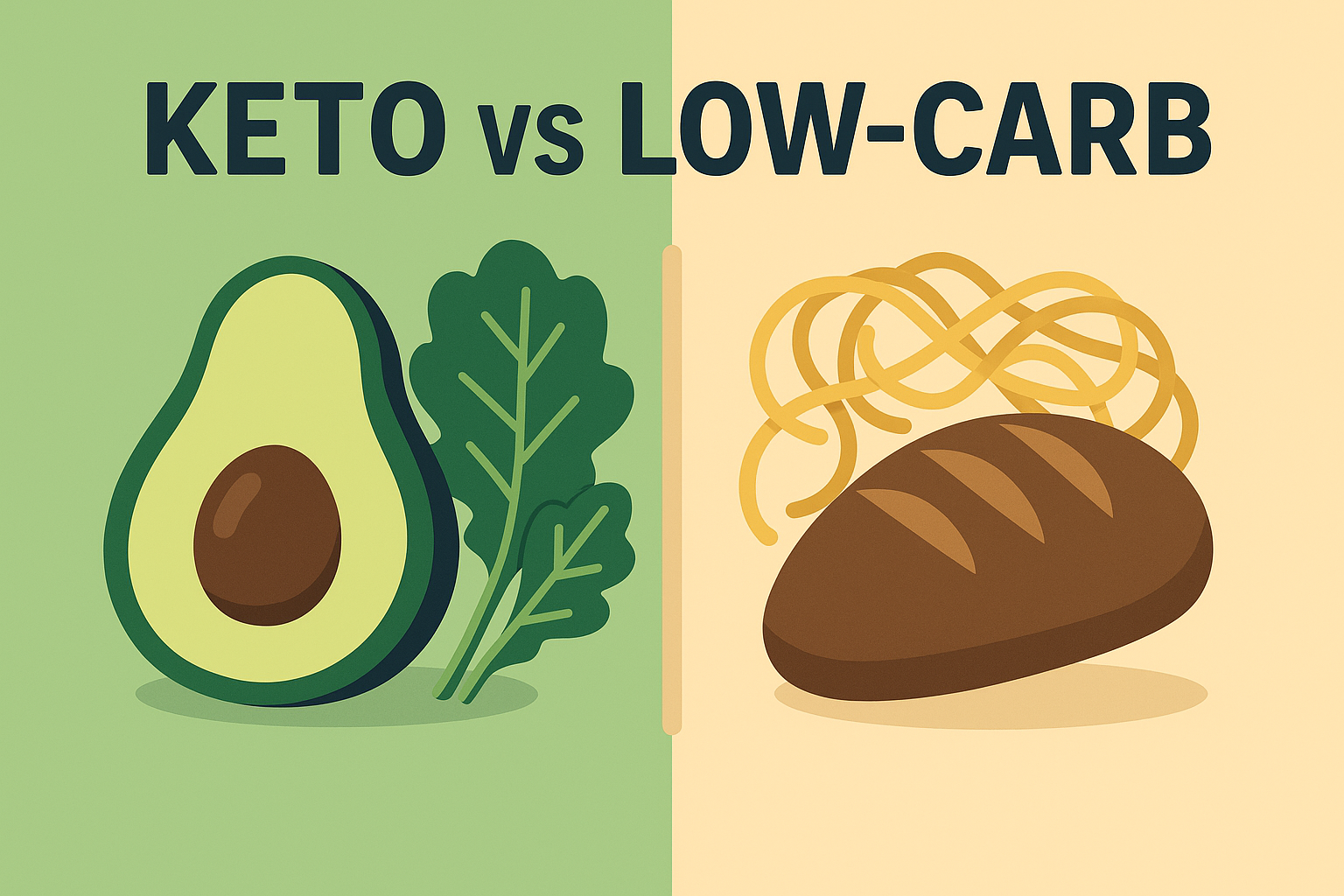
Keto vs Low-Carb: What's the Difference?
Keto and low-carb diets are often mentioned together, but they’re not the same thing. Understanding the differences can help you choose the right approach for your health goals and make smarter food choices.
The Key Differences
Ketogenic Diet
- Carbs: 5-10% of calories (20-50g per day)
- Fat: 70-80% of calories
- Protein: 15-25% of calories
- Goal: Achieve and maintain ketosis
Low-Carb Diet
- Carbs: 10-30% of calories (50-150g per day)
- Fat: 35-50% of calories
- Protein: 25-35% of calories
- Goal: Reduce carb intake without necessarily reaching ketosis
What is Ketosis?
Ketosis is a metabolic state where your body burns fat for fuel instead of carbohydrates. This only happens when carb intake is extremely low — typically under 50g per day.
Signs of ketosis:
- Increased energy after initial adjustment
- Reduced appetite
- “Keto breath” (fruity smell)
- Measurable ketones in blood/urine
Foods on Each Diet
Both Diets Include:
- Meat, poultry, fish
- Eggs
- Non-starchy vegetables
- Nuts and seeds
- Healthy fats (olive oil, avocado)
Keto Restricts More:
- ❌ Most fruits (except small amounts of berries)
- ❌ Grains and starches
- ❌ Legumes and beans
- ❌ Most dairy (except high-fat options)
- ❌ Root vegetables
Low-Carb Allows:
- ✅ Some fruits (especially berries)
- ✅ Small portions of starchy vegetables
- ✅ Limited whole grains
- ✅ More protein variety
- ✅ Some legumes in moderation
Which is Right for You?
Choose Keto if:
- You want rapid weight loss
- You have insulin resistance or type 2 diabetes (with medical supervision)
- You struggle with appetite control
- You can commit to strict carb limits
Choose Low-Carb if:
- You want more food flexibility
- You’re active and need more carbs for performance
- You find keto too restrictive
- You want sustainable long-term eating habits
Common Mistakes to Avoid
On Keto:
- Not eating enough fat — You need high fat to maintain energy
- Too much protein — Excess protein can prevent ketosis
- Hidden carbs — Watch sauces, dressings, and “sugar-free” products
- Ignoring electrolytes — Sodium, potassium, and magnesium are crucial
On Low-Carb:
- Carb creep — Gradually increasing carbs without realizing
- Processed “low-carb” foods — Often full of unhealthy ingredients
- Not enough vegetables — Focus on nutrient density
- Comparing to others — Find your personal carb tolerance
How FoodGrader Helps
Whether you’re following keto or low-carb, FoodGrader personalizes food scores to YOUR specific approach:
- For Keto Users: We flag hidden carbs and score based on your strict macros
- For Low-Carb Users: We allow more flexibility while keeping you on track
- Smart Comparisons: See which products fit your specific carb limits
- No Guesswork: Clear grades show if a food fits your diet
The Bottom Line
Both keto and low-carb can be effective for weight loss and health improvement. The “best” diet is the one you can stick to long-term.
Start with low-carb if you’re new to carb restriction, then consider keto if you want more dramatic results. Always consult with a healthcare provider before making major dietary changes, especially if you have underlying health conditions.
Ready to make either diet easier? FoodGrader takes the guesswork out of keto and low-carb shopping. Set your dietary preference and get personalized grades on every product.
Make Smarter Food Choices Today
Get personalized food grades based on YOUR dietary needs.
Download FoodGrader Free